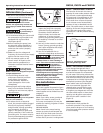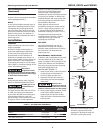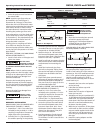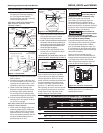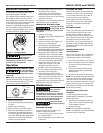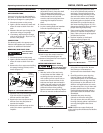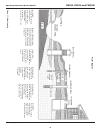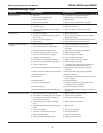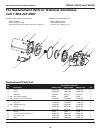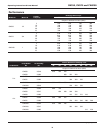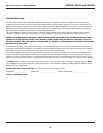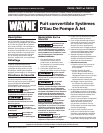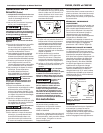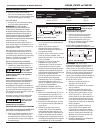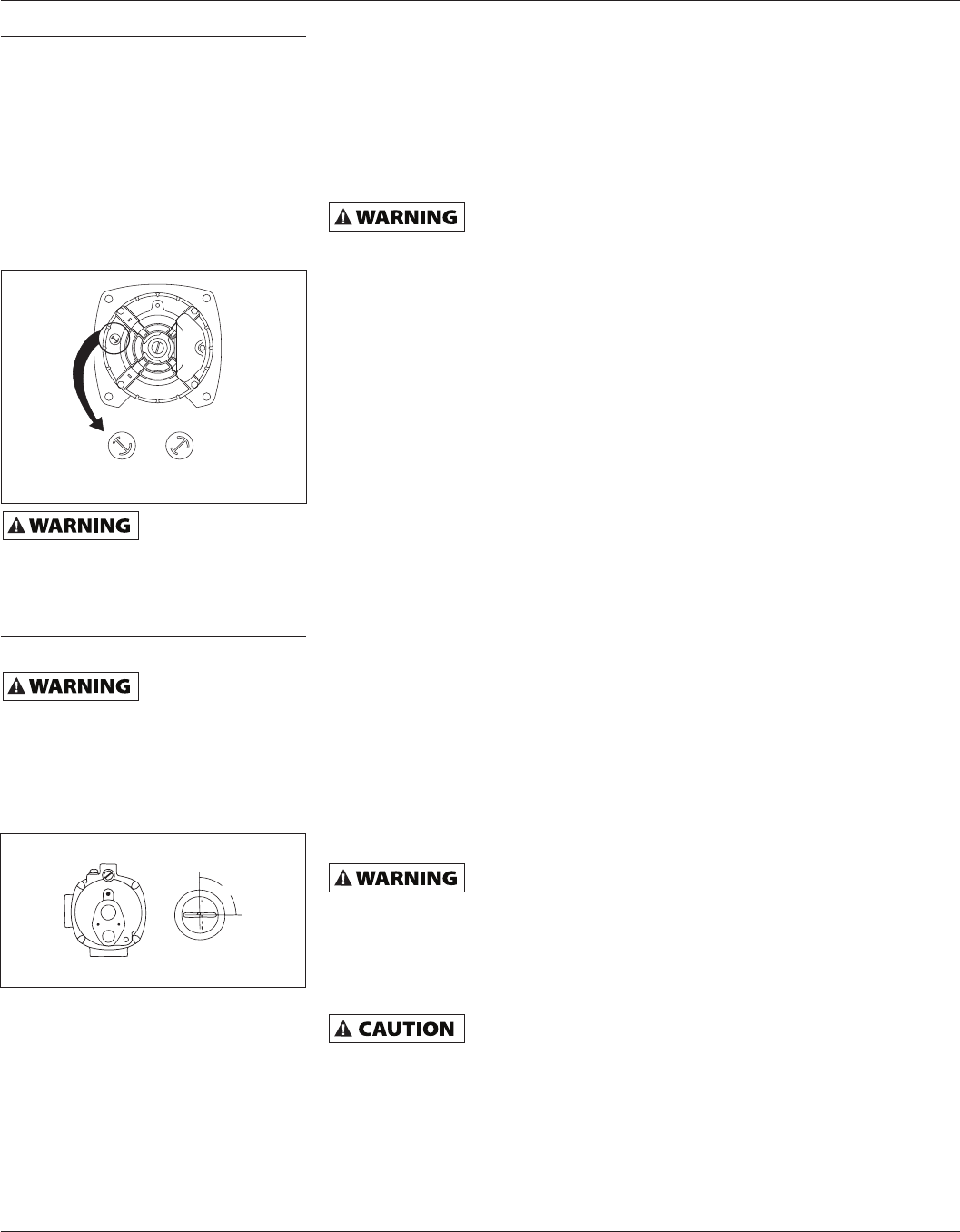
6
www.waynepumps.com
Electrical (Continued)
Check selector to voltage supply. They
must match change if needed.
The voltage of power supply must match
the voltage of the pump. The unit has
dual voltage motors preset at the factory
to 115 volts. The motors can be converted
to 230 volts by turning the voltage
selector to the desired voltage (see Figure
11). Use needle nose pliers to pull the
selector out approximately 1/4 in., rotate
and then reinsert in correct position.
Disconnect power
and release all
pressure from the system before
attempting to install, service, relocate
or perform any maintenance.
Operation
PRIMING THE SHALLOW WELL PUMP
To prevent damage
to the pump, do not
start motor until pump has been filled
with water.
NOTE: When the deep well pump is used
with the bolt-on shallow well jet, be sure
the control valve slot (Figure 12) is in the
vertical (open) position at all times.
1. Remove prime plug.
2. Fill pump and piping completely full
of water.
3. Replace the prime plug.
4. Open a faucet to vent the system.
5. Start the motor. Water will pump in a
few minutes. If pump fails to prime in
5 minutes, stop motor and refill pump
with water. Priming time is proportional
to the amount of air in inlet pipe. Do
not allow pump to get hot.
6. Let the system operate for several
minutes to flush all pipes.
7. Close faucet and allow pump to
build pressure in tank. When the
pressure reaches the cut-out setting,
the motor will stop.
The system is now in operation and will
automatically cycle on demand.
PRIMING THE DEEP WELL PUMP
To prevent damage
to the pump, do not
start motor until pump has been fi lled
with water.
1. Remove prime plug.
2. Fill pump and piping completely full
of water.
3. Replace the prime plug.
4. Close the control valve (Figure 12)
and open a nearby faucet.
5. Start the motor. The pressure inside
the pump body will build almost
immediately as the pump, jet and piping
become completely filled with water.
6. Slowly open the control valve. Water
will begin to flow. Continue to open
the control valve until maximum flow
is achieved. Opening the valve too far
will cause the water to stop flowing.
7. Adjust the valve until there is a
steady flow of water. The valve
should be opened as much as
possible without losing pressure.
8. Let the system operate for several
minutes to flush all piping.
9. Close the faucets and allow the
pump to build pressure in the tank.
When the pressure reaches the cut-
out setting, the motor will stop.
The system is now in operation and will
automatically cycle upon demand.
Maintenance
Disconnect power
and release all
pressure from the system before
attempting to install, service, relocate
or perform any maintenance. Lock the
power disconnect in the open position.
Tag the power disconnect to prevent
unexpected application of power.
Protect the pump
from freezing during
winter conditions.
DRAINING THE PUMP
Drain openings are provided on all
models. To drain the pump:
1. Remove drain plug and prime plug
to vent the system.
2. Drain all piping to a point below the
freeze line.
DRAINING THE TANK
Conventional tanks can be drained by
opening an outlet at the lowest point
in the system. Remove plug or the air
volume control to vent the tank.
Pre-charged tanks force virtually all
the water from the tank when system
pressure is released. No draining is
necessary.
RESTARTING PUMP
If the pump has been serviced, drained
or has not been used for some time,
be sure there is water in the pump
housing (volute) and the piping to the
well. There must be water in the pump
housing (volute) at all times when
the pump is running to avoid internal
damage of seal members (See Priming
the Shallow Well or Priming the Deep
Well Sections).
WATERLOGGED TANKS:
CONVENTIONAL
When a tank system has an inadequate
ratio of air and water, the pump will
start and stop often and erratically.
1. Disconnect the power to the pump.
2. Open the lowest faucet in the system
to release all pressurized water in
the system.
3. Prime the pump (See Priming the
Shallow Well or Priming the Deep
Well Sections).
4. Reconnect the power to the pump.
NOTE: As the pump refills the tank with
water, the air volume control supplies
the tank with the correct air to water
ratio for the system to operate. If the air
volume control is good, the pump will
shut off at the desired cut-off and will
be adjusted correctly.
WATERLOGGED TANKS: PRE-
CHARGED
If a pre-charged tank becomes
waterlogged, the bladder is normally
leaking or broken.
1. Test the tank by depressing the air
valve. The air valve will expel water
if the bladder is broken.
2. Replace the tank.
NOTE: Once a bladder is leaking or
broken, the bladder cannot be repaired.
The tank must be replaced.
Operating Instructions & Parts Manual
CWS50, CWS75 and CWS100
115 V
230 V
115 V
230 V
Figure 11 - Voltage Selector
Figure 12 - Control Valve
Control Valve Slot
Open
1/4 in.
Turn
Closed




